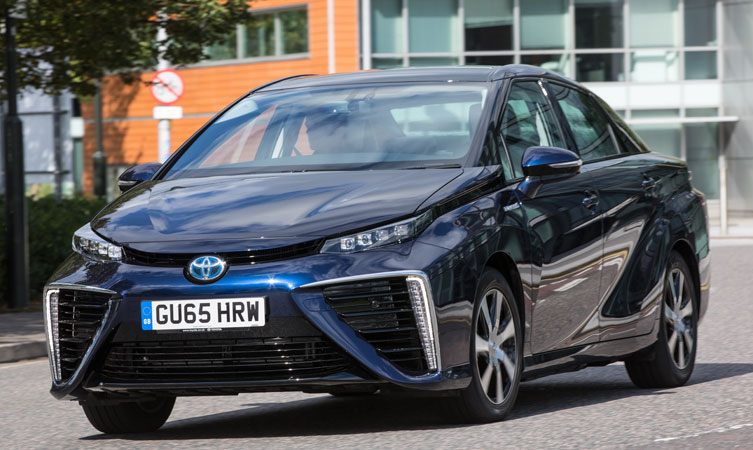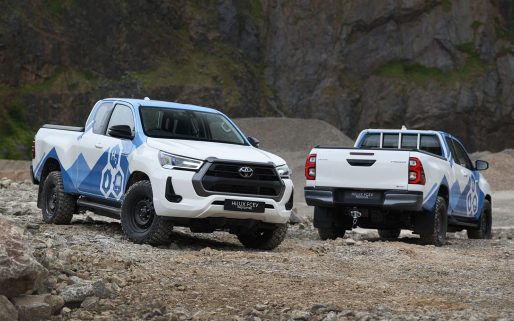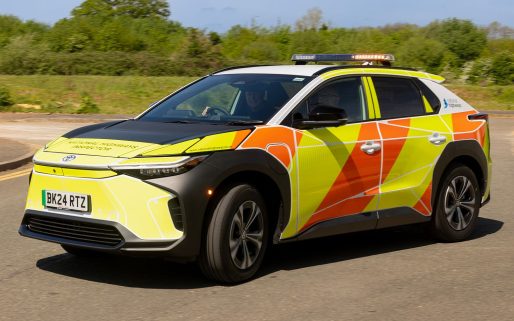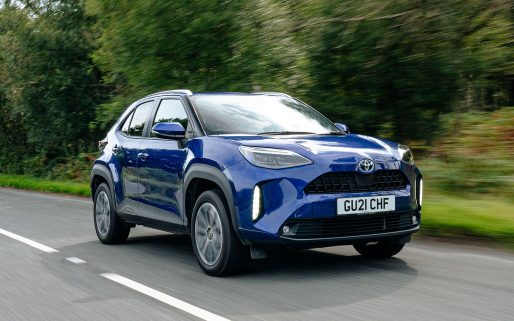The Toyota Mirai is the world’s first fuel cell saloon to enter full production. Hydrogen is stored in the car’s high-pressure tanks and combined with oxygen it generates electricity to power the car.
As the Mirai’s only emission is water vapour, Toyota sees the the fuel cell car as a core technology in its dream for a sustainable mobility society.
In this post we take a look at some of the features that make the Mirai unique.
1 Cold-weather testing
One of the drawbacks associated with cars fuelled by hydrogen is that maintaining good power generation from a fuel cell requires water, and in environments where the temperature regularly drops below freezing point, excess water freezes. This impedes the flow of air (oxygen) and hydrogen and reduces power generation performance.
Toyota has been developing fuel cell technology for more than 20 years and the Mirai has been extensively tested in extremely cold conditions in Alaska, Canada, Finland and Northern Japan.
Fuel cell stack output performance was evaluated after starting the car after it had been parked outdoors overnight for 17 hours at temperatures as low as -30C. One hundred per cent power output was obtained 70 seconds after starting.
See how the Mirai has been thoroughly tested in freezing and broiling temperatures around the world.
2 Just how safe are the hydrogen tanks?
The Mirai has two tanks storing the hydrogen at a pressure of 10,000psi (the air pressure in a Prius’ tyres is 35 psi as a comparison). And these tanks have been extensively tested – including being shot at by high-velocity weapons.
The tanks’ main source of strength is their carbon fibre shell, over which there is a further layer of glass fibre.
Should the car be involved in an accident, any damage to the hydrogen tank will be clearly visible on the glass fibre layer; tests can then be carried out to find out whether the carbon shell itself has been compromised. The glass fibre doesn’t contribute to rigidity of the tank, but gives absolute confidence in its integrity. The whole tank is lined with plastic to seal in the hydrogen.
3 What about refuelling?
It takes around three minutes to refuel the Mirai and should a driver attempt to drive off while the fuel nozzle is attached to the car, they will not succeed: the car is immobilised until the nozzle has been replaced in its holster and the car’s fuel cap is closed.
To be absolutely sure, a safety system is embedded in the hose that locks the pump should an attempt be made to drive the car off in the middle of refuelling.
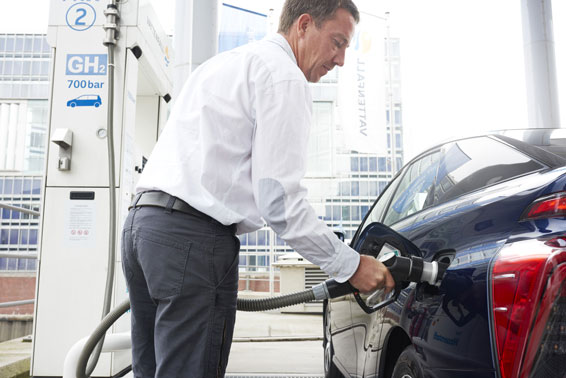
4 What’s that noise?
Driving the Mirai is an extremely quiet experience. There’s no engine noise or vibration from the Toyota Fuel Cell System. Other measures to make the Mirai’s cabin a haven of calm include acoustic glass for the windscreen and door mirrors, careful positioning of the door mirrors and the shape of the front pillars.
It is extremely aerodynamic too, with a drag coefficient of just 0.29, which helps reduce wind noise.
All body parts are fully sealed and foam-type sound-insulating materials are used inside the body frames.
5 Any cool safety kit?
The car is equipped with Rear Cross Traffic Alert function. When starting to reverse, for example from a parking space, vehicles approaching from either side travelling behind are detected by the system. An LED indicator blinks and a buzzer sounds to warn the driver.
6 Other cool stuff
Mirai owners can charge their smartphones on the move without the use of wires. Any phone compatible with the Qi system can be charged from the smartphone charging area in the centre console box.
7 Another Toyota hybrid
The Mirai isn’t just a fuel-cell vehicle – it’s also a hybrid. In addition to the FC stack, the Mirai uses a battery as another power source. The battery provides extra power during acceleration, and can be recharged using energy recovered during braking.
In all, Toyota holds around 5680 patents relating to fuel cell technologies – and have made them available for royalty free use.
8 Can eco car be fun to drive?
It may be an outstanding eco-car, but driving pleasure hasn’t been forgotten. Toyota’s engineers have located the Mirai’s FC stack, hydrogen tanks and other power unit components low down and close to the centre of the car. This gives the Mirai the balanced weight distribution of a mid-engined sports car.
In place of engine noise, the Mirai produces the sound of a tuned air compressor to reinforce the feeling of acceleration. Official tests back up that feeling of acceleration, too – the car has 0-62 mph time of 9.6 seconds.
9 It’s all in the details
Every aspect of the car is examined to make sure efficiency is maximised. For example, the daytime running lights (DRL’s) double up as aerodynamic devices. The front bumpers are extremely important areas for aerodynamics and the outer lenses of DRL’s are also designed to reduce airflow separation at the bumper corners.

10 What happens at the end of its life?
The Mirai will continue to be an ecological standard-setter, even when it reaches the end of its life. Toyota has created the world’s first fuel cell stack collection and recycling network, which will ensure valuable materials such as platinum can be recovered. In total, some 95 per cent of the Mirai can be recycled.
